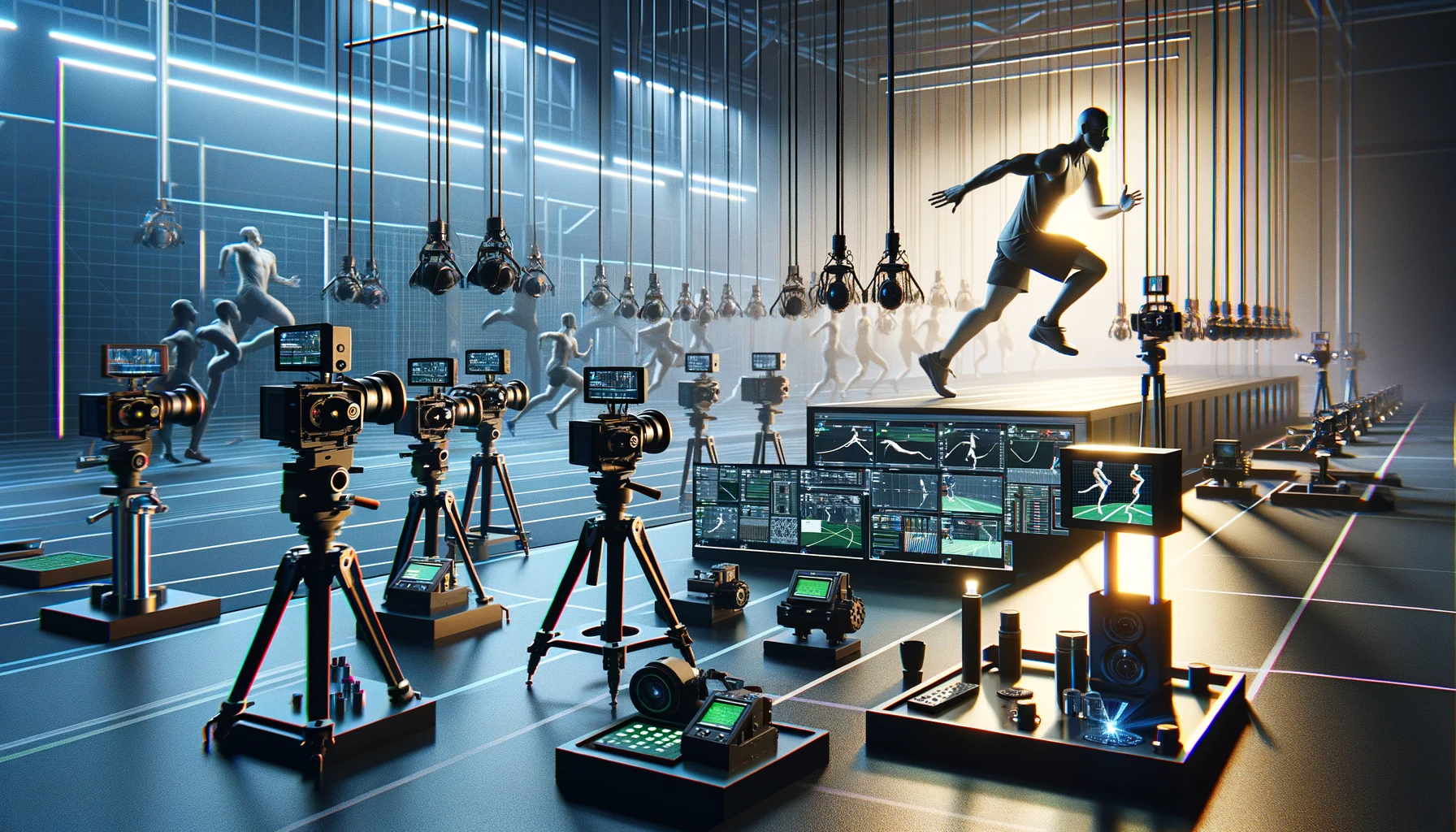In a paper published in the journal Scientific Reports, researchers explored the use of action sport cameras (ASC) for motion analysis. They compared data from two marker-based motion capture systems and six camera setups, assessing accuracy through different calibration methods.
 Study: Exploring Consumer-Grade Cameras for Precision Motion Analysis. Image credit: Generated using DALL.E.3
Study: Exploring Consumer-Grade Cameras for Precision Motion Analysis. Image credit: Generated using DALL.E.3
Findings showed slight differences in marker position and angular displacement between systems. The study showed that dynamic calibration for machine vision (MV) cameras and static calibration for ASC resulted in the most accurate reconstructions, emphasizing the camera types and calibration's impact on accuracy.
Background
Motion analysis systems are crucial in biomechanics, prosthetic design, sports performance, rehabilitation, and clinical evaluations. Typically, these systems involve optical or electromagnetic devices known for their accuracy in creating two-dimensional and three-dimensional motion models. These systems demand significant expenses, extensive cabling and setup, and mainly confine operations to lab environments.
Consumer-grade cameras, specifically ASC and MV, have emerged as potential alternatives. ASCs have advanced in image quality and affordability, finding application in sports performance evaluation. MV cameras, although pricier, possess attributes ideal for motion capture in industrial settings. Their potential use in motion analysis systems is an area of exploration due to their features, despite being less economical than ASCs.
Hybrid Motion Capture System Evaluation
The materials and methods compared 3D marker position data generated by experimental hybrid motion capture systems against the reference system. The experimental setup ensured accurate motion capture by utilizing a variety of camera combinations, including infrared monochrome cameras equipped with near-infrared (IR) extended pass filters and optical cameras. Furthermore, researchers explored variations in ASC configurations by altering the number of cameras or interchanging models within an array.
Two calibration instruments were employed to analyze the impact of calibration methods on motion capture reconstruction accuracy. The instrumentation and design encompassed a motorized mechanical arm, allowing precise motion along a single axis to simulate controlled joint flexion and extension within a defined plane. This robotic arm, designed to replicate such movements, featured reflective spherical markers attached to its segments, aiding in precise motion analysis. Researchers investigated the arm's motion behavior across a series of three trials.
A Vicon motion analysis system, recognized for its accuracy in reconstructing 3D movement data, served as the reference system for baseline measurements. It incorporated eight Bonita infrared cameras, while a separate configuration comprised four Vicon Vero 2.2 motion capture cameras for experimental analysis. A motion capture system from Innovision Systems, Inc., employing MV cameras and an array of four ASCs from GoPro, Inc., was also utilized. Each camera setup underwent specific settings and calibrations for optimal performance in the data acquisition process.
The camera calibration protocol involved both static and dynamic calibration methods. The Vicon systems underwent dynamic calibration using a manufacturer-recommended protocol, while the MaxTRAQ 3D software offered static or dynamic calibration options. Unique calibration fixtures and frame structures were employed to ensure accurate calibration across different camera combinations.
The data acquisition process encompassed synchronized recordings from multiple cameras across various systems and setups. The reflective marker wand and mechanical arm facilitated data collection across camera arrays. The recorded motion data underwent processing using specific software associated with each camera setup. The study incorporated camera and calibration combinations, simultaneously recording the arm's movement across twenty-one cameras for comprehensive data analysis.
Statistical analyses focused on quantifying accuracy and reliability between the reference and experimental camera systems. Researchers used descriptive statistics, root-mean-square error (RMSE) calculations, Pearson’s correlation coefficient, Analysis of Variance (ANOVA) tests, and Bland–Altman techniques to evaluate accuracy, reliability, and agreement among the camera setups compared to the reference system. The study set stringent criteria to achieve high accuracy and narrow margins, establishing a significance level at alpha 0.01 to investigate accuracy differences between instruments precisely.
Motion Analysis: Camera System Evaluation
The analysis commenced by assessing merit scores and calibration residual errors across various camera systems. The Shapiro–Wilk test revealed non-normal data, prompting using the Box-Cox technique for normalization. Despite this, the V-8 system showed a promising 0.09 mm RMS, meeting the calibration threshold. RMSE scores highlighted accuracy differences between the experimental cameras and the V-8 system, while strong Pearson’s correlation coefficients (r) confirmed a robust relationship across multiple trials.
The reference and experimental systems exhibited consistent segmental lengths, although the percentage error analysis highlighted discrepancies. The Bland–Atman assessment indicated systematic biases across camera systems. However, repeatability tests showed high reliability (International Color Consortium (ICC) = 0.92, 95% CI = 0.7–0.8) for angular displacement data across various trials and systems, affirming the consistency of the experimental setups. While discrepancies existed, the study showcased notable correlations and reliability between the practical and reference systems, demonstrating the potential for accurate motion analysis using the experimental camera setups across multiple trials.
Summary
To sum up, this study delved into the feasibility of employing consumer-grade camera systems for precise motion analysis. Despite discrepancies in specific analyses like percentage errors, the research underscored promising correlations and reliability between the experimental setups and the established reference system.
These findings signify the potential for leveraging these consumer-grade setups for accurate motion assessments across multiple trials. Further refinement and exploration of these systems hold substantial promise in expanding accessible and reliable motion analysis methodologies, offering viable alternatives to conventional, more expensive setups.